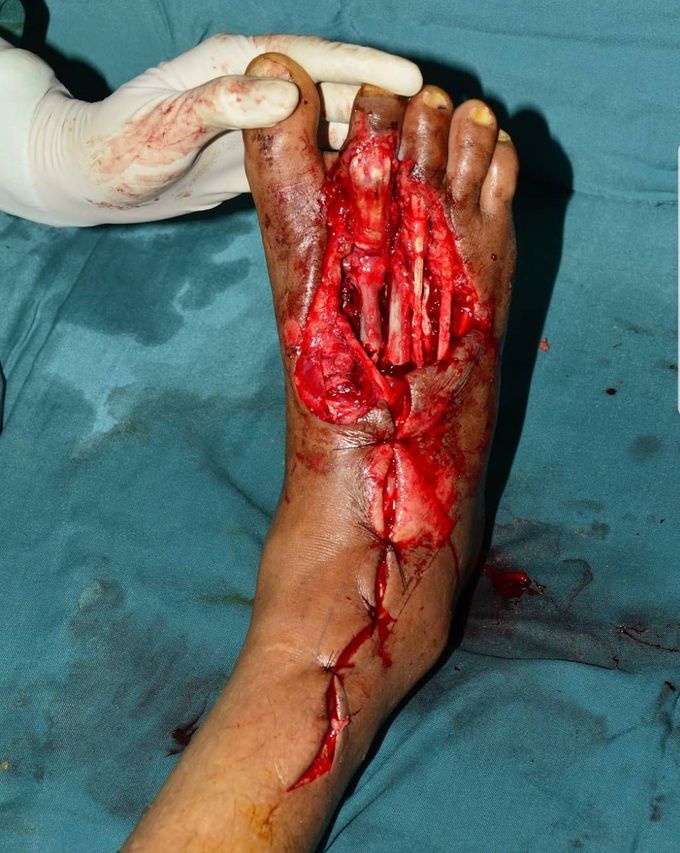


Right foot crush injury
A 69 year old gentleman who suffered a crush injury to his right foot. He had multiple metatarsal fractures and needed debridement and free gracilis muscle flap coverage and skin grafting.A crush injury is injury by an object that causes compression of the body. This form of injury is common following a natural disaster or after some form of trauma from a deliberate attack. Common concerns after an injury of this type are rhabdomyolysis and crush syndrome.In the case of a major crush injury, there is often serious damage below the skin, including tissues, organs, muscles and bones. A crush injury will often cut off the flow of blood in the damaged appendage, leading to serious muscle and tissue damage, as well as numbness and possible paralysis.There is also a much greater chance for infection in the damaged tissues and muscles. The force of the impact can also cause serious damage to the skin, in some cases completely removing layers and leaving the wound exposed to infection and deformity.In many cases of crush injuries, compartment syndrome will take place. When the muscles and tissues are deprived of blood for too long after a crush injury accident occurs, there is a strong chance that the nerves will become severely damaged and the victim will experience muscle death.When compartment syndrome is settling in, the first sign is extreme pain, followed by the tingling sensation of “pins and needles” that a limb experiences when it is “asleep” and then eventually paralysis of the limb. Once the paralysis has set in, the pulse will be nonexistent in the affected limb. A visual sign of compartment syndrome is swollen skin with a shiny appearance. Credit: crushinjury.blogspot.si
Normal tissue pressure ranges between zero and 10 mmHg. Capillary blood flow within the compartment may be compromised at pressures > 20 mmHg. Muscle and nerve fibers are at risk for ischemic necrosis at pressures >30 to 40mmHg. These pressures may still be tolerated — depending on the perfusion pressure, hence a recent trend towards using delta pressures, although most treatment recommendations are still based on absolute pressures: Delta pressure = diastolic blood pressure (DBP) — intracompartment pressure A delta pressure <30 mmHg is suggestive of compartment syndrome Ischemic injury to muscles and nerves occurs after 4 hours of complete ischemia. This becomes irreversible at some point over the next 4 hours (i.e. 4-8 hours after the onset of ischemia), resulting in local rhabdomyolysis and neuropraxis progresses to axonotmesis as nerve injury worsens. Indications for fasciotomy A delta pressure <20 mmHg is a definite indication for fasciotomy, <30 mmHg may be a relative indication clinical signs of acute compartment syndrome absolute pressure is >30 mmHg and the clinical picture is consistent with compartment syndrome arterial perfusion has been interrupted for 4 or more hours


